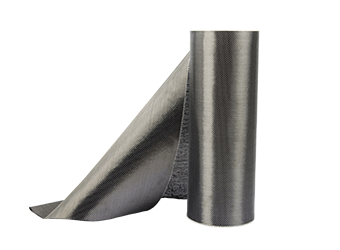Solutions
Horse Construction offers full range of structural strengthening materials with technical supports, documentation supports, products supports, project supports.
FRP Pile Jacket
Underwater FRP (Fiber-Reinforced Polymer) pile jackets are specialized protective coverings made of composite materials that are designed to reinforce and protect submerged piles in marine or underwater environments. They are used in various applications, including offshore structures, ports, bridges, and piers.
The construction and installation process for underwater FRP pile jackets may involve the following steps:
Assessment and Preparation: A thorough inspection of the existing submerged piles is conducted to assess their condition and determine the required rehabilitation. Any necessary cleaning or surface preparation is performed to ensure proper adhesion of the FRP jacket.
Jacket Design: The design of the FRP pile jacket takes into account factors such as the water depth, wave and current loads, and the specific environmental conditions. The design ensures that the jacket provides adequate reinforcement and protection to the submerged pile.
Fabrication: The FRP pile jacket is fabricated off-site, typically in sections, based on the design specifications. The jacket is usually constructed using composite materials, such as carbon fibers or glass fibers, embedded in a polymer matrix.
Installation: The installation of underwater FRP pile jackets can be challenging due to the water environment. Different methods can be employed, including:
Divers: Specially trained divers can manually wrap the jacket sections around the piles underwater. The sections are then connected and sealed to form a continuous covering.
Jacket Submersion: In some cases, the jacket sections may be immersed in water and then placed around the piles using flotation devices. Once positioned correctly, the water is displaced to allow the jacket to adhere to the pile surface.
Grouting: Another method involves injecting grout into the jacket sections, causing them to expand and conform tightly to the shape of the pile. This method ensures a secure attachment of the jacket to the pile.
Curing: After installation, the resin within the FRP jacket is allowed to cure, either by a chemical reaction or through the application of heat. This process ensures the hardening of the composite material, providing the desired strength and durability.
Underwater FRP pile jackets offer several advantages in marine environments:
Corrosion Resistance: FRP materials are highly resistant to corrosion from saltwater and other corrosive agents, protecting the submerged pile from deterioration.
Lightweight and Flexible: The lightweight nature and flexibility of FRP materials make them easier to handle and install underwater. They can conform to irregular shapes and provide a tight fit around the existing pile.
Longevity: The corrosion-resistant properties of FRP allow for extended service life, reducing the need for frequent maintenance or replacement.
Improved Load-Carrying Capacity: The addition of the FRP jacket enhances the load-carrying capacity of the submerged pile, providing increased strength and stability.
You can find anything here you are in need of, have a trust trying on these products, you will find the big difference after that.

High strength, unidirectional carbon fiber wrap pre-saturated to form a carbon fiber reinforced polymer (CFRP) wrap used to strengthen structural concrete elements.

High strength, unidirectional carbon fiber fabric pre-saturated to form a carbon fiber reinforced polymer (CFRP) fabric used to strengthen structural concrete elements.

High strength, unidirectional carbon fiber sheet pre-saturated to form a carbon fiber reinforced polymer (CFRP) sheet used to strengthen structural concrete elements.